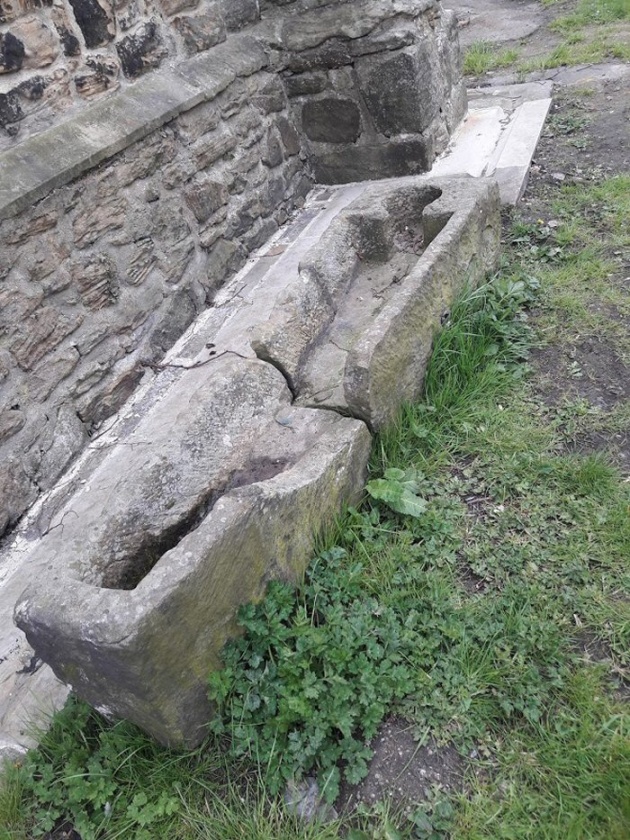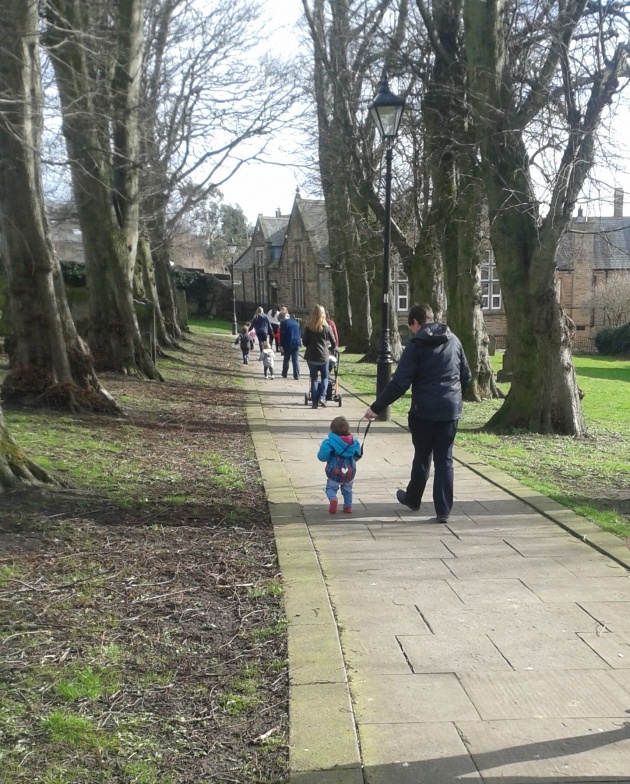St Mary’s churchyard – a place of rest
Now a peaceful and leafy walkway St Mary’s churchyard tells the stories of many townspeople laid to rest across the centuries but it has also been the scene for brawling, bed-linen and children playing on the tombs!
With medieval buildings once hemming in St Mary’s, the church now stands within a churchyard shaded by “a fine avenue” of lime trees, planted alongside hollies and spruces in 1884 by the then vicar, Rev Frederick Brown.
Until the later Victorian era most funerals took place entirely at the graveside, and until the population grew more literate – and slightly more prosperous! – most people had no gravestone (our earliest gravestones are preserved in St Mary’s north transept). The wealthiest townspeople were buried inside the church for many years: diarist Christopher Sanderson wrote in March 1650 that his wife Christian was buried “in the pue, or stall, where my father sitts.”
By the early 1800s the interior church paving had become so “broken, the whole appearance slovenly and offensive” that the pews were standing on soil with human remains only inches from the surface! Thankfully St Mary’s worked to create a newly paved floor and new seating by 1815.
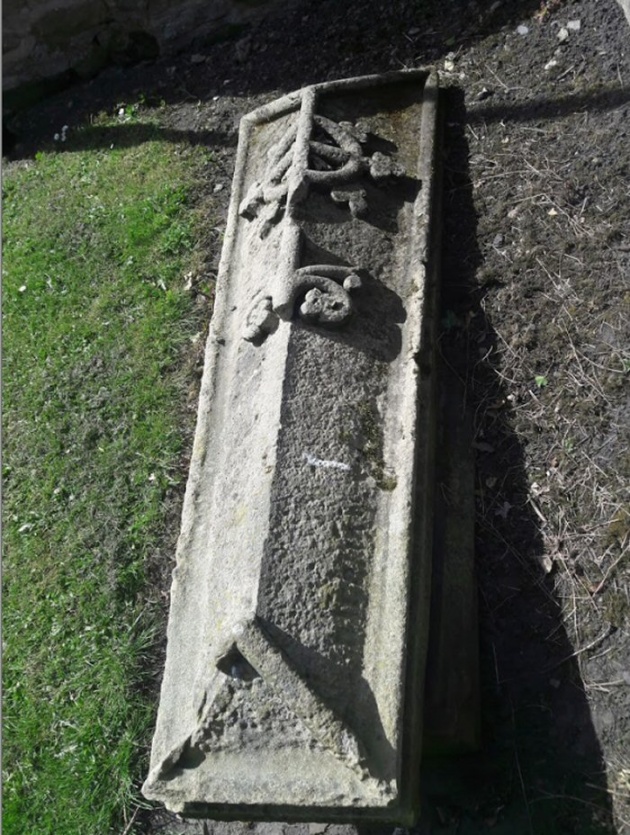
The churchyard grew to the east and south in 1804 and in 1838. A National [boys’] school was erected at the east corner in 1814 and a Girl’s School in a small enclosure on the western corner in 1840.
By 1818 the church resolved to erect an iron railing round the churchyard as children were using it as a playground, kicking bones aside before jumping on and off the gravestones! But it wasn’t until the efforts of schoolmaster JJ Bailey in 1863 that the churchyard finally gained its flagged pathways and railings, later donating the railings in the national effort for the Great War.
Boys’ National School – photo copyright: F. Parkin Raine Collection
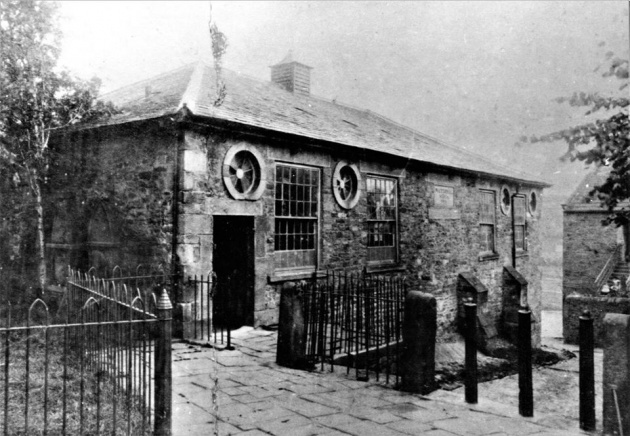
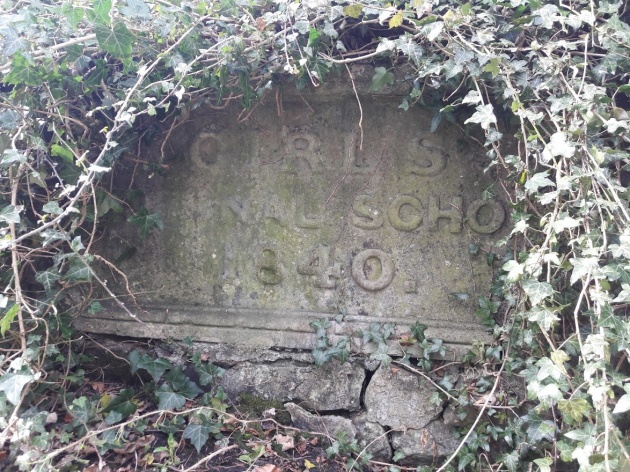
The churchyard was officially the province for the sexton, who was both gravedigger and caretaker to the church’s interior, and 1807 St Mary’s was bold enough to appoint a woman, Margaret Westwick, to the task – “so long as she conducts herself properly”! With a number of public houses bordering the churchyard, St Mary’s also needed a town patrol occasionally to safeguard against drunken outbursts and scuffles.
Once railings were installed in 1863, the churchyard suddenly became a rather unedifying “drying ground” for local washerwomen, draping under-clothing, bedlinen and even mattresses over the rails!
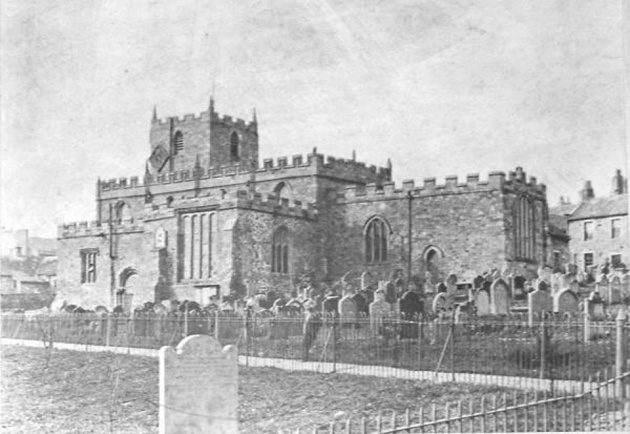
Whilst the 1866 memorial to those who died in the cholera outbreak is sited on their burial ground, one notable gravestone on the north side of the path is of the only cholera victims buried separately: wealthy John Pratt and his family, whose death led to the closure of his mill and the unemployment of 300 townspeople.
With the churchyard’s official ‘closure’ in 1859 a new town cemetery was created (with separate sections allocated to the town’s Methodist and Roman Catholic congregations) and church responsibility for graveyards increasingly shifted onto municipal Burial Boards. To help with care and maintenance church workers ‘lined up’ the gravestones in the 1950s although this did enable the schoolchildren from the Schools bordering the churchyard to more easily play football amongst their serried rows!
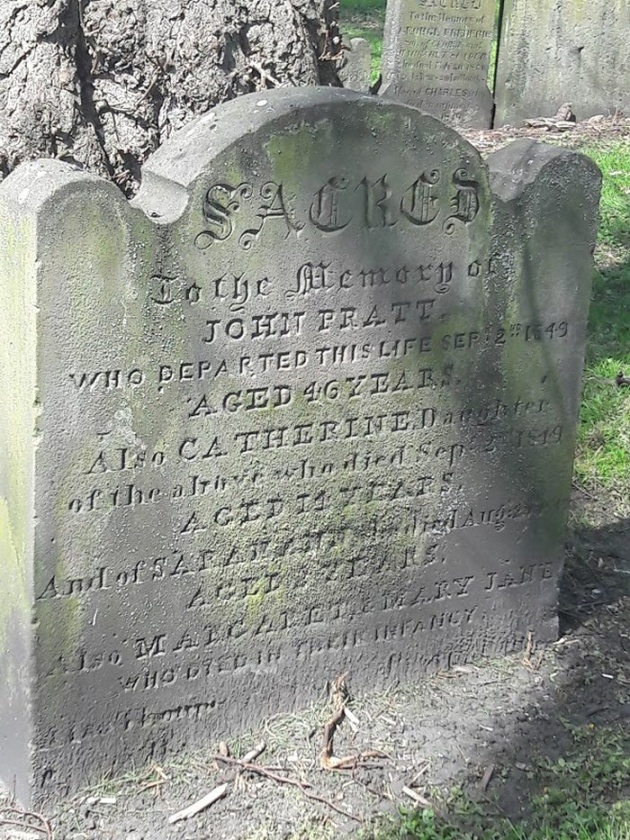
If you look carefully you will spot the medieval stone coffin which may have come from the castle’s chapel, the grave of 18th century historian William Hutchinson or the gravestone previously used as a cheese press! But as you wander amongst the stones you will also see loved ones of great age and many of just a few weeks or years, alongside young mothers lost to childbirth, men from the Militia and DLI, factory owners and those who worked in their factories. You can read their living faith, speaking from their gravestones, voicing their trust in God’s loving presence in life and in the hope of eternal resurrection.
Ye, who remain, may heaven direct your way!
Seek ye the field with confidence secure,
That even the death which comes shall leave a ray
To gild the simple annals of the poor!
You can explore St Mary’s Graveyard Database through the following link or via a hard-copy file available in St Mary’s church
